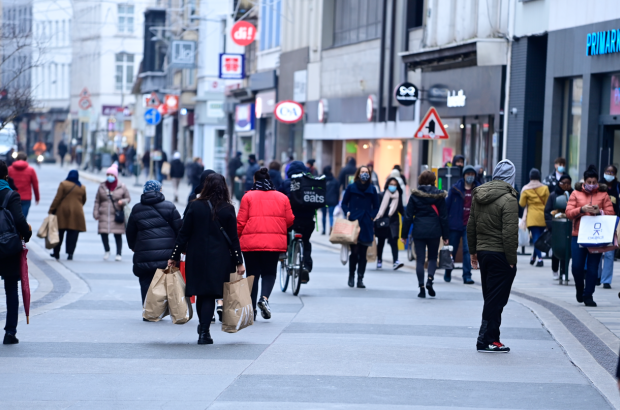- Daily & Weekly newsletters
- Buy & download The Bulletin
- Comment on our articles
New study shows most Brussels shops are not reliant on motorists
A new mobility study has revealed that almost half (48%) of shop customers in Brussels walk and cycle to stores in the capital's 123 busiest shopping areas, with just 17% using their car and the rest coming via public transport.
Carried out by hub.brussels, the capital’s agency for entrepreneurship, the study contradicts some shop owners’ claims that Brussels’ new mobility plan GoodMove will hurt business by making them harder to reach by car.
There are some nuances to the study’s findings. In the main centres (for example, Rue Neuve, Porte de Namur, Rue de Brabant), there is a more or less equal balance between people who say they come by car and those who come by public transport.
In municipal shopping areas, such as the Saint-Guidon district in Anderlecht and the centre of Molenbeek, walking, cycling and public transport are more common.
In the 123 commercial nodes studied, there are a total of almost 124,000 parking spaces. Most of these are on-street (59%). On average, there are about seven parking spaces available to customers for each business located in a given shopping area.
On the whole, the core areas of the Pentagon (Rue Neuve, Dansaert, Sablon) benefit from a large number of parking spaces thanks to the car parks along the inner ring. Conversely, the major commercial centres in the inner suburbs (Saint-Gilles and Molenbeek) have limited on- and off-street parking.
Despite this study joining a slew of others around the impact of car traffic in Brussels – which has some of the worst car congestion and air pollution of all European capitals – protests against the GoodMove mobility plan continue.
The new traffic test near the Ixelles ponds has been postponed indefinitely following discontent and the signing of a number of petitions by local residents.
The aim was to ban through traffic on the Square de la Croix-Rouge by installing ANPR cameras capable of scanning number plates to allow only local residents through - a system already in use on the part-pedestrianised Chaussée d'Ixelles.
The residents who were critical of the closure succeeded in having it postponed, with the help of the MR-Engagés opposition.




















Comments
Guess what, If all streets around Brussels shops are blocked off, the study will find that shops are a big fat ZERO percent (0%) reliant on motorists.
The study "forgot" to mention the drop in purchases the "non reliant" shops are facing, since traffic was purposefully turned into hell by the so called goodmove.
When residents (of Ixelles, Anderlecht etc) come together by the thousands to oppose goodmove's "brilliant ideas" to "save" them from noise & pollution by shutting down or narrowing their streets, it's time to seriously reconsider and STOP & REVERSE all this nonsense.
The people have spoken loud and clear!
What do they have to do next?
Scream?
A relevant study would have compared the number of customers with the numbers before traffic restrictions came into force. Otherwise it is just a tautological finding.
Makes one wonder if the fact that only numbers supporting the political message propagated by the city and region that Good Move is a success is actually proof that the negative consequences are much worse than assumed. Why else consistently look away?